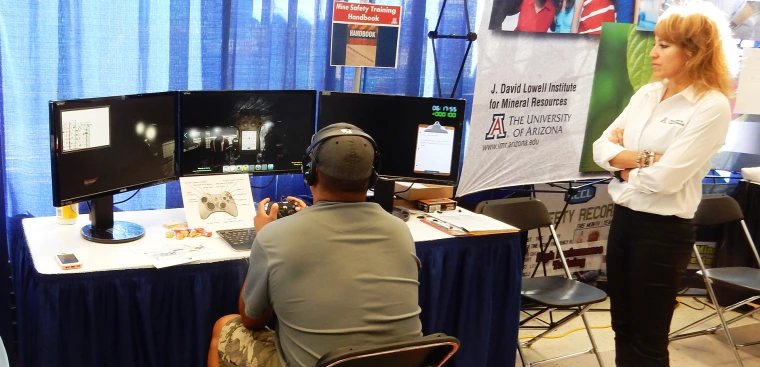
The Western Mining Safety and Health Training Resource Center offers a variety of highly effective training materials for the mining industry. This website serves as a gateway to those resources, which include:
Competency Models for Training
The International Board of Standards for Training, Performance, and Instruction (IBSTPI) defines a competency model as “an integrated set of skills, knowledge, and attributes that enables one to effectively perform the activities of a given occupation or function to the standards expected.”[1] A competency model provides "a collection of multiple competencies that together define successful performance in a defined work setting.”[2] Competency models are vital to:
- Develop training materials addressing key knowledge, skills, and abilities.
- Assess the quality of existing and candidate training materials.
- Establish core leadership competencies for mine safety partners.
- Assess the health and safety knowledge, skills, and abilities of the workforce.
Working closely with industry, the Center has developed two foundational competency models for mining. These models outline competencies for the mine trainer and for emergency preparedness. Additionally, a set of design guidelines was developed to enhance the usability of training resources.
Active Learning Resources
Adult learning, or andragogy, differs from pedagogy in that the instructor becomes an equal in the learning process — a facilitator instead of a director. Active learning methods, such as serious games, have proven to be very effective for adults, enabling knowledge retention rates as high as 90%.[3] Games also motivate younger learners in ways that other activities do not.[4][5][6] In particular, games and other experiential activities are better at evoking flow, a state where learners "lose themselves" in the activity. While in flow state, learning can be more productive.[7][8]
Using active learning approaches, the Center has developed a Continuum of Training Resources to augment each organization's capabilities for training and assessment:

The Center's goal is to provide an expanding collection of resources and allow trainers to select materials that meet their unique training needs and levels of educational technology readiness. This approach offers room to grow: As trainers increase their capabilities, they can migrate to increasingly sophisticated materials and technologies. The Center's resources presently include activity guides and handbooks, group-focused tabletop activities and apps, tools for tracking and analytics, and sophisticated training software.
- Koszalka, T., Russ-Eft, D., and Reiser, R. (2013) Instructional Design Competencies: The Standards (4th Ed). Charlotte, NC: Information Age Publishing. Available at IBSTPI
- Department of Labor, U.S. (2020). "About the Competency Models." Available at Competency Model Clearinghouse
- Dale, E. (1969). Audio-Visual Methods in Teaching (3rd ed.) pp. 108. New York, NY: Holt, Rinehart & Winston. ISBN: 0030890063
- Garris, R., Ahlers, R., & Driskell, J.E. (2002). "Games, Motivation, and Learning: A Research and Practice Model." Simulation and Gaming, 33(4), pp. 441-467. https://doi.org/10.1177/1046878102238607
- Gee, J. P. (2008). "Learning and Games." In K. Salen (Eds.), The Ecology of Games: Connecting Youth, Games, and Learning pp. 21-40. Cambridge, MA: MIT Press. https://doi.org/10.1080/13691180802552890
- Prensky, M. (2001). Digital Game-Based Learning. New York, NY: McGraw-Hill. https://doi.org/10.1145/950566.950596
- Gee, J. P. (2004). Situated Language and Learning: A Critique of Traditional Schooling. London: Routledge. https://doi.org/10.4324/9780203594216
- Lieberman, D. A. (2006). "What can we learn from playing interactive games?" In P. Vorder, & J. Bryant (Eds.), Playing Video Games: Motives, Responses, and Consequences, pp. 379-397. Mahwah, NJ: Lawrence Erlbaum Associates Publishers. https://doi.org/10.4324/9780203873700

